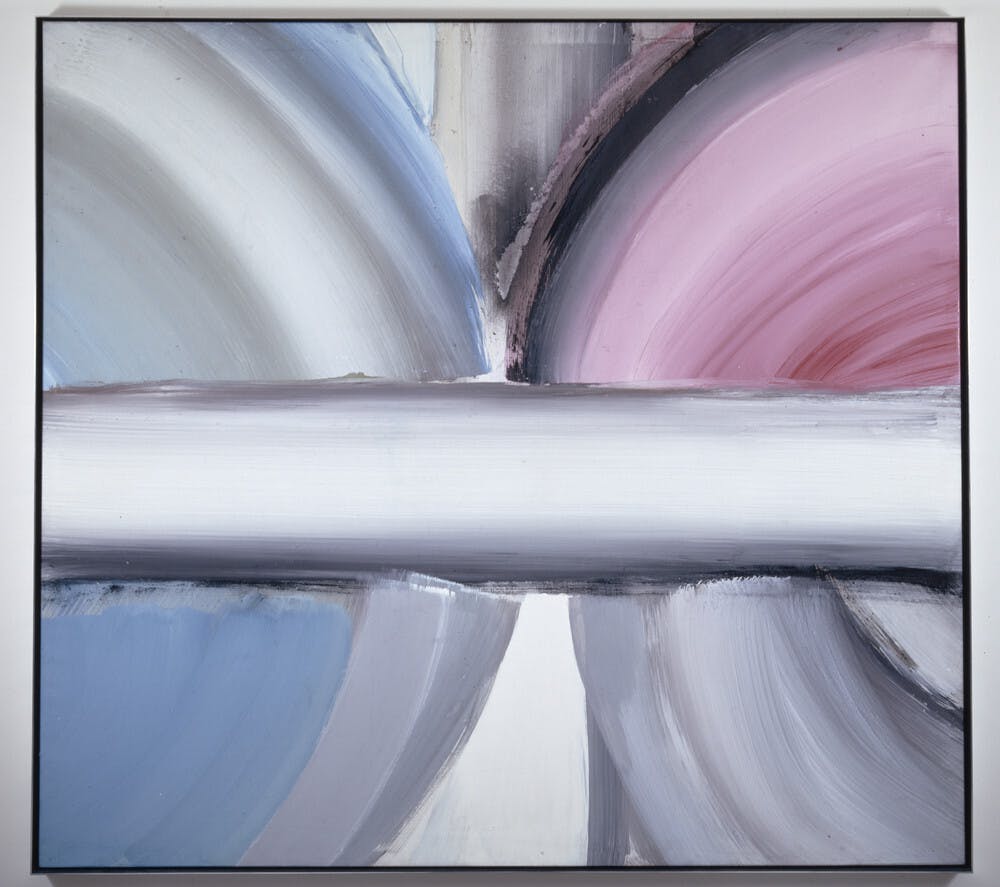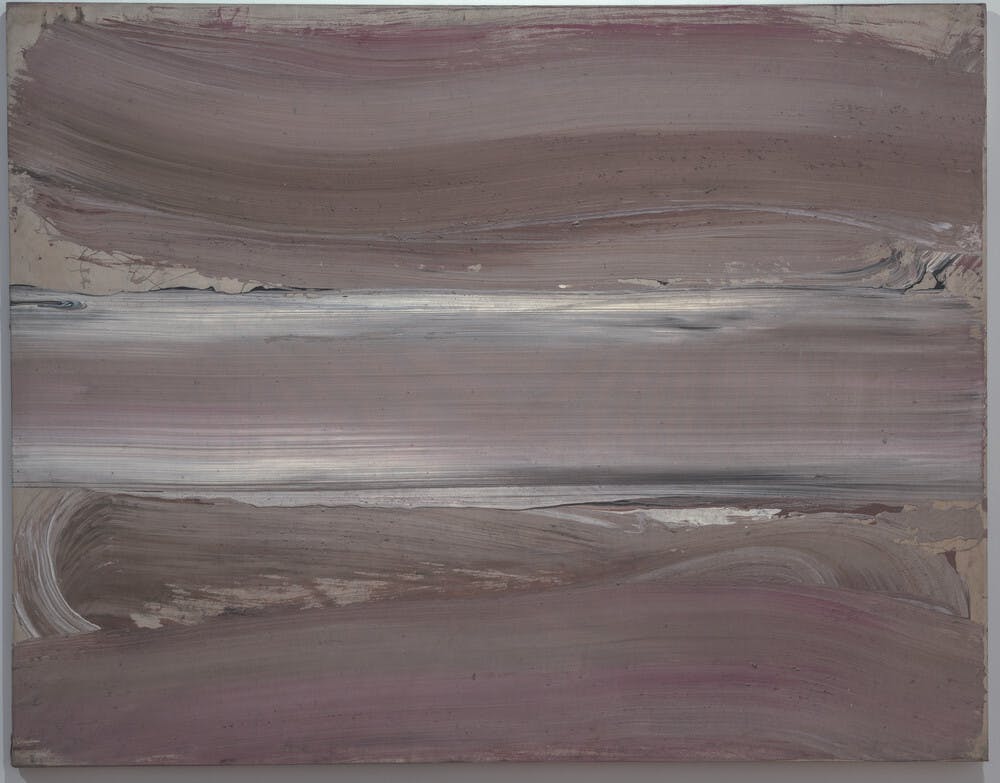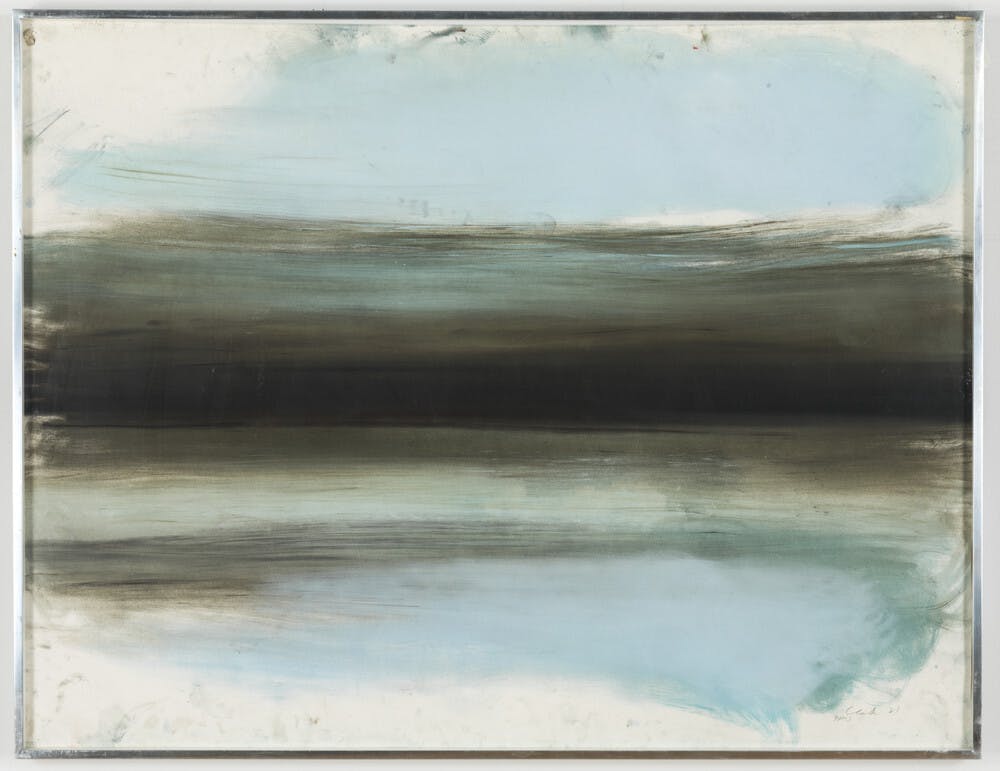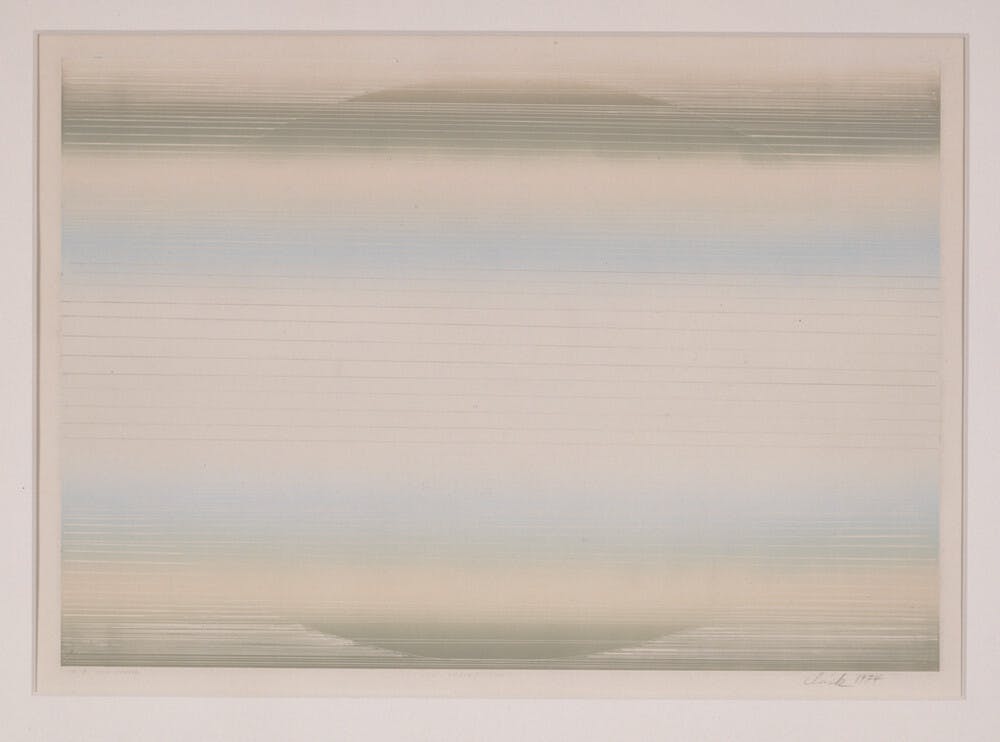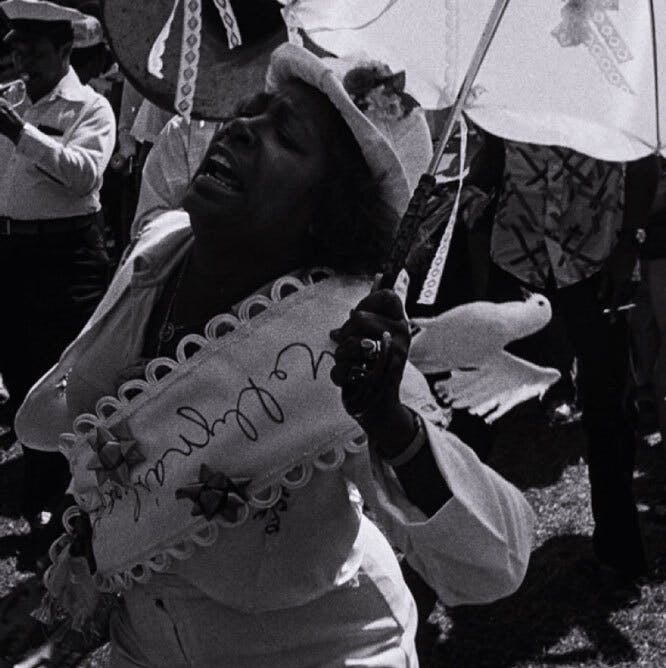Ed Clark
(1926–2019)Ed Clark is best known for his “push-broom technique,” in which he used a household broom to cover a canvas in sweeping strokes of color.
Biography
Throughout his seven-decade-long career, Ed Clark radically reframed the landscape of postwar American painting.
Born in New Orleans, he knew from an early age he wanted to pursue art. At the age of seventeen, he dropped out of high school to join the Army Air Forces, serving for two years in the South Pacific. Upon returning to the United States, he studied at the Art Institute of Chicago, on the GI Bill, from 1947 to 1951.
Clark is best known for his “push-broom technique,” in which he used a household broom to cover a canvas in sweeping strokes of color. During his time living in Paris in the 1950s, this approach became foundational to his practice as he sought to move beyond the limitations imposed by the conventional paintbrush. His practice brought together his interests in the materiality of paint, the monumentality of the broom strokes, and the emotionality of the Abstract Expressionist movement. After settling in New York in 1957, Clark exhibited his first shaped canvas at Brata Gallery—a cooperative gallery of which Clark was a charter member—which went on to become another hallmark of his practice. From the late 1960s until his passing in 2019, Clark split his time between New York and Paris. He found inspiration throughout his extensive travels, noting that “no matter what I do, there’s not a day that I’m not an artist.”1
Clark’s work is included in the permanent collections of institutions across the world, including the Art Institute of Chicago; the Metropolitan Museum of Art, New York; the Smithsonian National Museum of African American History and Culture, Washington, DC; and the Whitney Museum of American Art, New York. Clark’s first museum retrospective, Ed Clark: A Complex Identity (1980) was presented at the Studio Museum, and his work has been featured in group exhibitions such as Explorations in the City of Light: African American Artists in Paris, 1945-1965 (1996) and Circa 1970 (2016).
1) “Remembering Ed Clark,” Hauser & Wirth, accessed October 10, 2022, hauserwirth.com/events/35059-remembering-ed-clark/.
Exhibitions and Events
Ed Clark
(1926–2019)Ed Clark is best known for his “push-broom technique,” in which he used a household broom to cover a canvas in sweeping strokes of color.
Untitled (Paris Series), 1987
Biography
Throughout his seven-decade-long career, Ed Clark radically reframed the landscape of postwar American painting.
Born in New Orleans, he knew from an early age he wanted to pursue art. At the age of seventeen, he dropped out of high school to join the Army Air Forces, serving for two years in the South Pacific. Upon returning to the United States, he studied at the Art Institute of Chicago, on the GI Bill, from 1947 to 1951.
Clark is best known for his “push-broom technique,” in which he used a household broom to cover a canvas in sweeping strokes of color. During his time living in Paris in the 1950s, this approach became foundational to his practice as he sought to move beyond the limitations imposed by the conventional paintbrush. His practice brought together his interests in the materiality of paint, the monumentality of the broom strokes, and the emotionality of the Abstract Expressionist movement. After settling in New York in 1957, Clark exhibited his first shaped canvas at Brata Gallery—a cooperative gallery of which Clark was a charter member—which went on to become another hallmark of his practice. From the late 1960s until his passing in 2019, Clark split his time between New York and Paris. He found inspiration throughout his extensive travels, noting that “no matter what I do, there’s not a day that I’m not an artist.”1
Clark’s work is included in the permanent collections of institutions across the world, including the Art Institute of Chicago; the Metropolitan Museum of Art, New York; the Smithsonian National Museum of African American History and Culture, Washington, DC; and the Whitney Museum of American Art, New York. Clark’s first museum retrospective, Ed Clark: A Complex Identity (1980) was presented at the Studio Museum, and his work has been featured in group exhibitions such as Explorations in the City of Light: African American Artists in Paris, 1945-1965 (1996) and Circa 1970 (2016).
1) “Remembering Ed Clark,” Hauser & Wirth, accessed October 10, 2022, hauserwirth.com/events/35059-remembering-ed-clark/.
